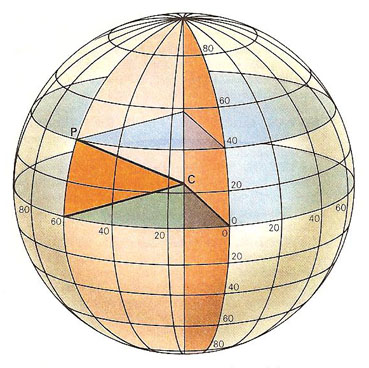latitude

Parallels of latitude are circles on the surface of the Earth, parallel to the equator and labeled according to their angular distance from the equator. The position of a place on the surface of the Earth can be specified by citing the parallel of latitude and the meridian of longitude which intercept at that place. Here, the coordinates of P are 40°N 60°W, a position in the North Atlantic Ocean some 1,200 km east of New York.
Latitude is the angular distance north or south from the equator. Assuming Earth to be a sphere (although it is more nearly an oblate spheroid), we can think of the latitude of a point as the angle between a line from the center of Earth to the point and a line from the center to the equator at the same longitude. Each pole, then, has a latitude of 90°, and so latitude is measured from 0° to 90° north and south of the equator, lines of latitude being circles parallel to the equator that get progressively smaller toward the poles. Each degree of latitude is about 111 kilometers (69 miles).
The Tropic of Cancer and Tropic of Capricorn are 23.5°C away from the equator, and the Arctic and Antarctic circles are at 66.5°C, which is 23.5°C away from the poles.
For celestial latitude see celestial sphere.


